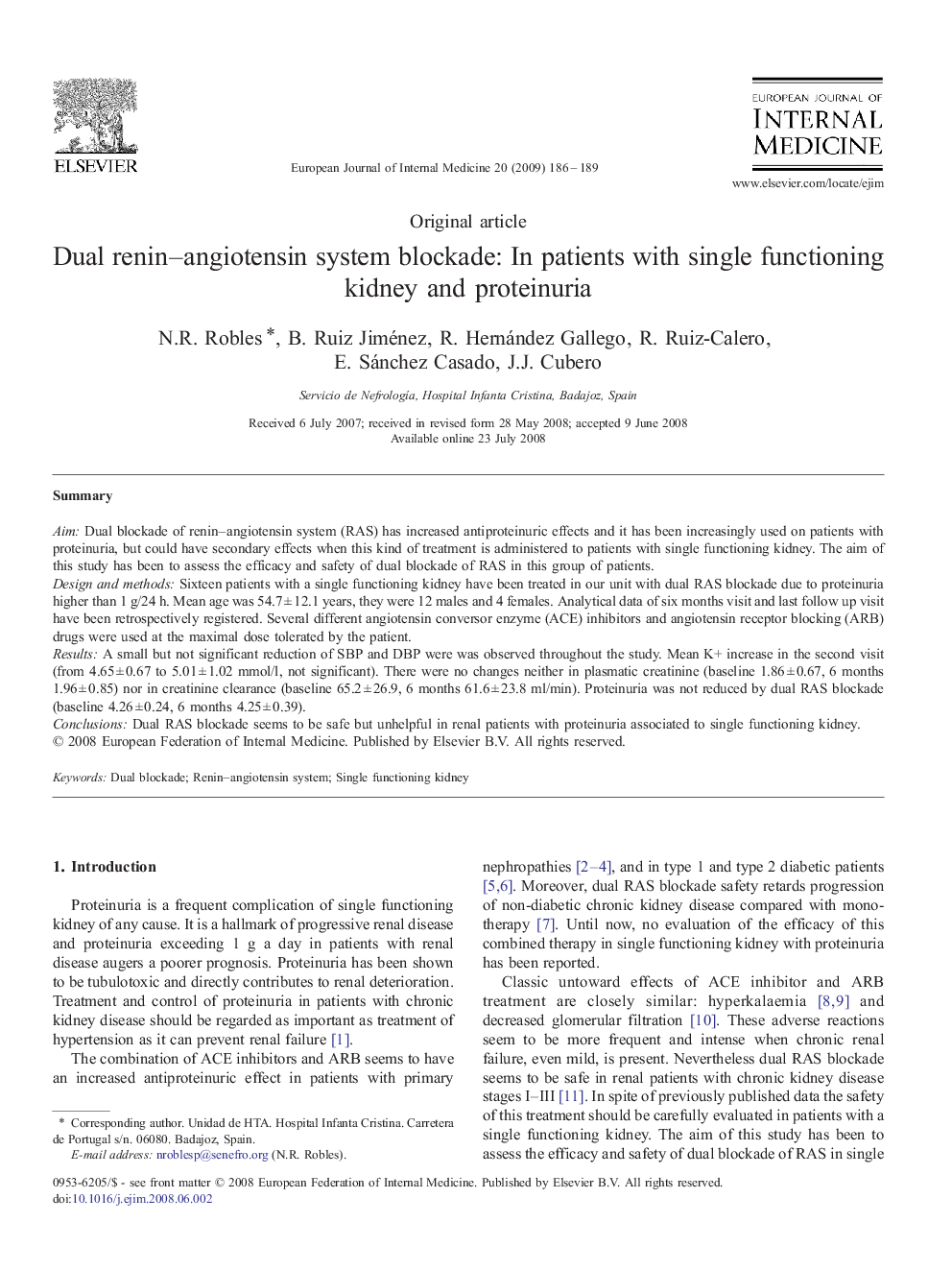| Article ID | Journal | Published Year | Pages | File Type |
|---|---|---|---|---|
| 3467689 | European Journal of Internal Medicine | 2009 | 4 Pages |
SummaryAimDual blockade of renin–angiotensin system (RAS) has increased antiproteinuric effects and it has been increasingly used on patients with proteinuria, but could have secondary effects when this kind of treatment is administered to patients with single functioning kidney. The aim of this study has been to assess the efficacy and safety of dual blockade of RAS in this group of patients.Design and methodsSixteen patients with a single functioning kidney have been treated in our unit with dual RAS blockade due to proteinuria higher than 1 g/24 h. Mean age was 54.7 ± 12.1 years, they were 12 males and 4 females. Analytical data of six months visit and last follow up visit have been retrospectively registered. Several different angiotensin conversor enzyme (ACE) inhibitors and angiotensin receptor blocking (ARB) drugs were used at the maximal dose tolerated by the patient.ResultsA small but not significant reduction of SBP and DBP were was observed throughout the study. Mean K+ increase in the second visit (from 4.65 ± 0.67 to 5.01 ± 1.02 mmol/l, not significant). There were no changes neither in plasmatic creatinine (baseline 1.86 ± 0.67, 6 months 1.96 ± 0.85) nor in creatinine clearance (baseline 65.2 ± 26.9, 6 months 61.6 ± 23.8 ml/min). Proteinuria was not reduced by dual RAS blockade (baseline 4.26 ± 0.24, 6 months 4.25 ± 0.39).ConclusionsDual RAS blockade seems to be safe but unhelpful in renal patients with proteinuria associated to single functioning kidney.
